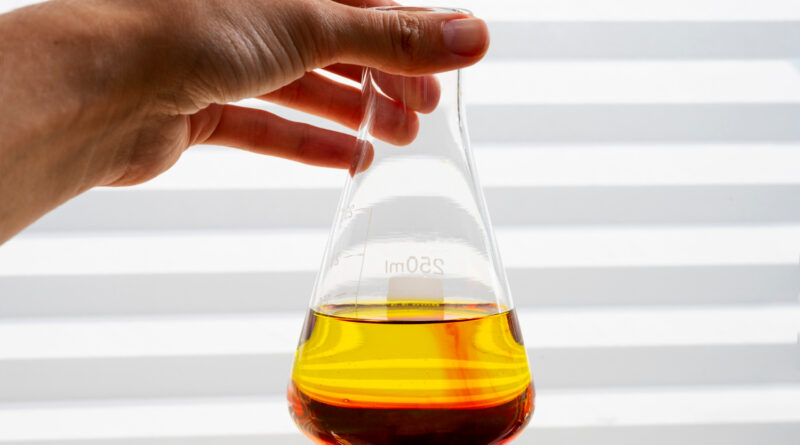Identifying The Hcooch Ch2 H2o Of Methyl Formate Is A Crucial Chemical Reaction
The Hcooch Ch2 H2o of methyl formate, which additionally appears as HCOOCH₂H₂O, is a basic chemical reaction that is extremely significant in many lab and workplace environments. If you’re interested in chemistry or work in the field, knowing how this process works, what factors affect it, and how it’s used in real life can help you understand how important it is.
This piece will go into great detail about how methyl formate Hcooch Ch2 H2o works, how important it is in industry, the factors that affect how well it works, and some very important safety issues. Let’s start at the beginning and work our way up.
What does HCOoch Ch2 H2o mean?
Now that we know what methyl formate is, let’s talk about what Hcooch Ch2 H2o is. A chemical process called HCOoch Ch2 H2o breaks down a compound with water. Usually, the process causes a molecule to break apart into two smaller pieces. To make Hcooch Ch2 H2o from methyl formate (HCOOCH₂), the ester is broken down into formic acid (HCOOH) and methanol (CH₃OH) with water.
How Methyl Formate (HCOOCH₂) Works
Formic acid and methanol are mixed to make methyl formate, which is an ester. Chemical synthesis uses this clear, flammable liquid a lot in both labs and factories to make different chemicals, as a solvent, and as a starting material for chemical synthesis. Its chemical structure is made up of a formate group (HCOO) connected to a methyl group (CH₀). It reacts with water in a way called Hcooch Ch2 H2o.
How the HCOoch Ch2 H2O Reaction Works
That of methyl formate’s Hcooch Ch2 H2o follows a normal ester Hcooch Ch2 H2o path. An acid or a base usually speeds up the reaction, which happens in two main steps. Water makes the first step easier.
- Attack with Nucleophiles: Water molecules attack the carbonyl carbon in the ester group as nucleophiles. This is the first thing that needs to be done to separate the formate and methyl groups. A tetrahedral intermediate is made when the oxygen in the water molecule gives an extra pair of electrons to the electrophilic carbonyl carbon.
- Making Products: Once the intermediate is made, the link between the carbonyl carbon and the oxygen of the ester group breaks. This lets the methanol (CH₁OH) escape. The last part of the molecule changes into formic acid (HCOOH), which makes the end products HCOOH, CH2, and H2O.
This process is simple, but it’s important to know it in order to understand how the reaction works in different situations.
Factors that affect
The rate and effectiveness of the Hcooch Ch2 H2o of methyl formate can be changed by a number of things. Some of these are:
Heat or cold
Temperature is a big part of the Hcooch Ch2 H2o of methyl formate, as it is in most chemical processes. Higher temperatures usually speed up the process by giving the molecules more energy. This makes it more likely that water will attack the nucleus. However, very high temperatures can cause unwanted side effects or the goods to break down.
Catalysts
The Hcooch Ch2 H2o reaction can happen in both acidic and basic situations. When the environment is acidic, the protonated water molecule makes water more nucleophilic, which speeds up the process. In the same way, hydroxide ions (OH⁻) can act as the nucleophile in basic conditions, making it easier for the ester bond to break. Picking the right catalyst can change how well and selectively the reaction works, so it’s important to pick the right settings for each job.
How Much Water There Is
The concentration of water affects the response because it is an important part of the process. The ester Hcooch Ch2 H2o can move faster when there is more water available because there are more water molecules to break the ester bond. But sometimes, changing the amount of water can help control the rate of the reaction, which makes it better for commercial uses.
Weakness
In factories, the amount of reaction can be controlled by changing the pressure. Increasing the pressure can bring more water molecules into the system, which speeds up the HCOCH Ch2 H2O process. On the other hand, decreasing the pressure could slow down the reaction. Controlling the pressure is very important in large-scale industrial processes where speed is important.
Applications in Industry
The Hcooch Ch2 H2o of methyl formate is not just a thought experiment; it is used in many real-world situations. Some of the most common uses are to make formic acid, which is an important chemical used to finish textiles, tan leather, and keep animal feed fresh. Formic acid can be made quickly and easily with methyl formate Hcooch Ch2 H2o. It can be used alone or as a building block for other chemicals.
The process makes methanol as well as formic acid. Methanol is useful as a solvent and building block for making formaldehyde, plastics, and other chemicals. So, the Hcooch Ch2 H2o of methyl formate helps make a number of important chemicals that are used in many different areas.
Thoughts on the Environment
The chemical reaction methyl formate Hcooch Ch2 H2o is important, but it also has effects on the world that need to be thought about. It is important to be careful around formic acid, which is one of the results. To have the least amount of effect on the environment, it is important for industrial settings to use the right ways to get rid of waste and treat waste streams.
When the reaction is done on a big scale, it is also important to think about how much energy will be used and whether any emissions will happen. Companies that care about the environment are trying to improve the process by cutting down on waste and using less energy.
Thoughts on Safety
Safety rules must be followed very carefully when working with chemicals like methyl formate, water, and methanol. In both labs and factories, the following safety measures should be taken:
- Personal Protective Equipment (PPE): Gloves, goggles, and lab coats should be worn to keep the poisons from getting on your skin or eyes. It is important to have good ventilation because breathing in methyl formate or methanol vapours can be dangerous.
- Handling and Storing: Methyl formate can catch fire, so be careful when you store it. It should be kept in barrels with tight lids in well-ventilated areas, away from things that could catch fire.
- Management of Spills: If there is a spill, it is important to have absorbent pads and other materials on hand to clean it up. To keep things from getting contaminated, chemical waste must be thrown away in the right way.
- Fire Safety: Because methyl formate and methanol are quickly ignited, chemical fire extinguishers should be easy to get to. In case of a fire, there should be a plan for what to do.
Examples of Use in Laboratories
There are times when the Hcooch Ch2 H2o of methyl formate is used in the lab to show how ester Hcooch Ch2 H2o works or as a step towards making formic acid. The reaction is also useful for researchers working on organic synthesis because it can be used as a step in the process of making other compounds.
Because the reaction is so basic, it can also be used in schools to teach students about nucleophilic attack, esterification, and acid-base catalysis. Because of this, it is very useful for both experts and students.
In conclusion
The Hcooch Ch2 H2o of methyl formate (HCOOCH₂H₂O) is a useful and important reaction that connects theoretical chemistry with life. It is important to understand how this reaction works, what factors affect it, and how to keep everyone safe, whether it is in a lab or a large-scale commercial setting. By understanding how important it is, we can use this process to make critical chemicals like formic acid and methanol while minimising any risks and maximising its usefulness. As chemistry changes, so will the part that reactions like the Hcooch Ch2 H2o of methyl formate play in spurring new ideas and making processes better in many fields.
By knowing how this chemical process works, we can better deal with its many parts and make sure they are used safely and effectively in both professional and industrial settings.




